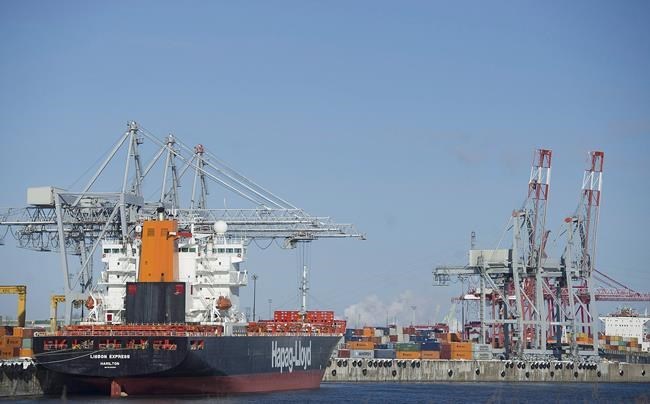The organization that oversees the St. Lawrence Seaway expects that with economic growth projected to rise this year, shipments along the maritime route could pick up in 2021 after staying flat last year.
The St. Lawrence Seaway held a ceremony Monday to inaugurate the start of its operations for this year, its second maritime shipping season of the pandemic.
In 2020, volume was hurt by reduced shipments of products like jet fuel and cement.
But Terence Bowles, the president and chief executive of the St. Lawrence Seaway Management Corp. that oversees the waterway, said he is hopeful that an increase in economic growth will drive activity along the waterway.
“We often say the seaway is a bellwether for the economy,” Bowles said. “I’m certainly expecting business to pick up, for sure.”
The St. Lawrence Seaway is the linchpin in a system of commercial waterways that connects the Atlantic Ocean with the Great Lakes. A key conduit for goods entering and leaving Canada, the waterway each year supports millions of tonnes of shipments of essential industrial products such as manufacturing inputs, petroleum products and building construction materials.
The seaway was closed since Dec. 31 for the winter, during which time there was more than $80 million worth of infrastructure maintenance to the system’s locks and other mechanisms, Bowles said.
The Baie St. Paul, a lake freighter, was the first ship to enter the waterway this year, passing through the St. Lambert Lock as part of a virtual opening ceremony attended by federal Minister of Transport Omar Alghabra and U.S. Secretary of Transportation Pete Buttigieg.
Last year's shipping volume declined in various categories such as liquid bulk, which includes petroleum products like jet fuel and gasoline, and dry bulk, which includes materials used for manufacturing and construction.
Shipments of liquid bulk dropped by about a third last year as people travelled less. Similarly, low demand for automobiles and shutdowns at some manufacturing plants led shipments of dry bulk and iron ore to drop by 9.4 per cent and 12.4 per cent, respectively.
The decline was offset by exceptionally high grain shipments, with high demand for grain and Canadian farmers posting strong crop yields.
In total, 38 million tonnes of cargo passed through the seaway in 2020, down nearly 1.7 per cent compared with 2019.
Looking ahead to 2021, Bowles expects shipments in categories that declined in 2020 to increase, especially with large energy infrastructure projects underway in Western Canada and a boom in building construction and the potential for higher car sales, Bowles said.
However, grain shipments could decline slightly this year after reaching record levels in 2020, Bowles said.
The Port of Toronto saw high levels of cement and steel imports in 2020, said PortsToronto, which oversees the port, amid a boom in housing sales in the Toronto metropolitan area.
Cement cargo levels were the highest the Port of Toronto had handled in 16 years, PortsToronto said.
Some airlines are also expecting at least a partial restart in travel later this year, which could drive demand for fuel.
Fuel shipments are “definitely going to bounce back as soon as things become more normal,” Bowles said.
This report by The Canadian Press was first published March 22, 2021.
Jon Victor, The Canadian Press



